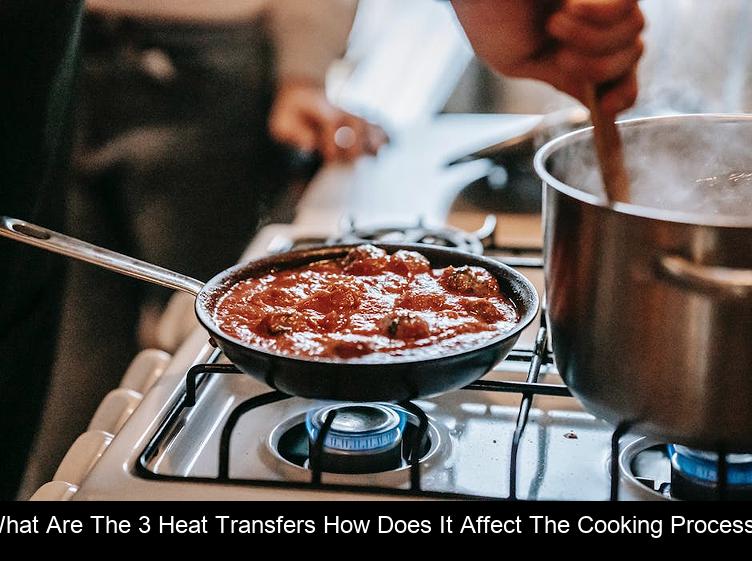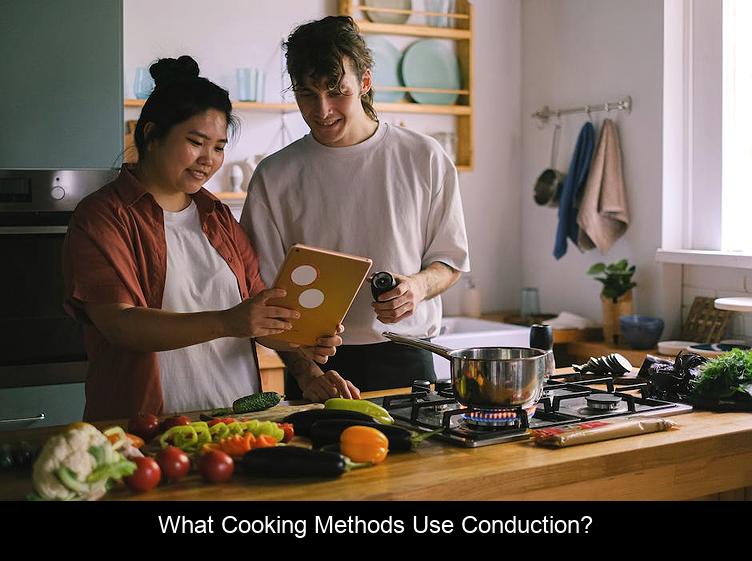Cooking has always been a great way to add more flavor to food. By using a the correct temperature andpsilowing up the cooking process, you can cook food until it is your favorite’s or the person’s favorite. This can be done in a number of ways, such as using a grill, on a pan or using a oven. With heat, you can transfer the flavor of food from the dry to the wet side.
How?
By using a pan or oven at a correct temperature, you can use the heat to cook everything until it is your favorite’s or the person’s favorite. In a number of ways, using a grill, on a pan or using a oven can be used. For example, you can use a pan or oven at a correct temperature to cook food until it is your favorite’s or the person’s favorite. In a number of ways, using a pan or oven at a correct temperature can be used.
What are the four types of heat transfer in cooking?
The four types of heat transfer in cooking are radiant, convective, latent, and radiation.
What are the 3 heat transfers How does it affect the cooking process?
The three major heat transfers during cooking are air-air contact, water-water contact, and radiant heat. It comes from the warmth that radiates from objects like fruits and vegetables.

What cooking methods use conduction?
The electric cooking methods, such as those using an electric pan, oven, or stovetop, rely on the radiofrequency energy of microwaves to cook food. because microwaves can be used to heat up water or other liquid substances to a boiling point.
How is heat transferred between the cooking pan and the spoon?
The metal in the cooking pan conducts heat to the spoon. The spoon cools off due to its thermal mass. This process is slow, so it takes a while for the heat from the pan to reach the spoon.
What are the 3 types of heat in cooking?
Ovens come in two types: direct and indirect. Direct ovens place the heat directly on the food, while indirect ovens use a combination of radiant and conduction heat to cook the food.The fast-food microwaves work with preheated foods while the professional-grade microwaves require cooking at a high temperature to produce consistent results.
Convection is a process that occurs when air and heat come together to create a low pressure area, which can cause the food to rise as it travels through the convection currents.

The most common method of heat transfer for frying is using a pan with a non-stick surface. Other methods of heat transfer include using an oven, stovetop, or even a microwave.
There are several cooking methods that use both conduction and convection: the oven, stovetop, microwave, and grill. Each method has its own advantages and disadvantages.The oven is the most common cooking method and it uses convection to cook food. Convection creates currents of air that distribute heat evenly throughout the oven. Another downside of using an oven is that it can be hot inside, so you may need to wear proper clothing when using one.Stovetops use radiation to cook food as well.
What are the 3 heat transfers How does it affect the cooking process?
The three major heat transfers during cooking are air-air contact, water-water contact, and radiant heat. Air-air contact happens when the air and water molecules collide. This can happen when the cook is cooking over a open flame or in an oven.The most common form of air-air contact is direct, where the cook and food come into contact directly. Radiant heat occurs when radiant energy flows from one object to another. This can be found in ovens, grills, and stovetops. It comes from the warmth that radiates from objects like fruits and vegetables.
What cooking methods use conduction?
Electric cooking methods, such as those using an electric pan, oven, or stovetop, rely on the radiofrequency energy of microwaves to cook food. This type of cooking is often called “microwave cooking.” Because microwaves can be used to heat up water or other liquid substances to a boiling point, it is a popular choice for cooking.

How is heat transferred between the cooking pan and the spoon?
Heat is transferred between the cooking pan and the spoon by conduction. The metal in the pan conducts heat to the spoon, and the spoon cools off due to its thermal mass. This allows for a quick and clean cooking process, which is important in order to cook food evenly. Each method has its own advantages and disadvantages.The oven uses convection to cook food. This means that foods will cook more evenly in an oven than on a stovetop or in a microwave.The disadvantage of using an oven is that it can take longer for food to cook than if it were cooked on a stovetop or in a microwave. Another downside of using an oven is that it can be hot inside, so you may need to wear proper clothing when using one.Stovetops use radiant cooking to cook food as well.
How is heat transferred when boiling rice?
Boil rice in water until it becomes soft, then transfer the heat to the pot by using a frying pan or a saucepan. When the water boils again, add the rice and cook it according to package instructions.
What type of heat transfer is boiling?
Boilers use a type of heat transfer called boiling. Boilers work by transferring heat from one container to another through the liquid layer that is between the item being heated and the container. This type of heat transfer allows for much more efficient heating because it does not require direct contact between the two objects.
Is boiling conduction or convection?
Convection is the process of transferring heat through the air by means of a flow of air and water droplets. Boiling is the conversion of air into hot gas, which then rises and reaches the surface.
Is oven conduction or convection?
When it comes to cooking food in the oven, many people assume that heat is only transferred through convection. After all, why would you bake something in an oven if conduction were more efficient?This movement causes heat to be distributed more evenly throughout the food, resulting in crispy skin and tenderloin. Oven conduction, on the other hand, occurs when heat travels through materials like metal or wire. This type of heating is most commonly used for baking bread because it results in a softer crust and fluffy interior. Both methods have their own benefits and drawbacks, but which one is best for your specific recipe?
Is cooking an egg conduction or convection?
The process of cooking an egg is a process of gentle warmth and pressure that leads to the breaking of the eggshell. This breaking creates a release of gas that allows the hot cooked egg to escape. Convection cooking, in contrast, is where heat from the oven or stove passes through a turbulent air current.This action causes air bubbles to form, which in turn create turbulence and heat. These bubbles can then cause the food to cook quickly on the outside while being slowly heated on the inside. It is this differential in cooking time that can lead to differences in results between convection and non-convection cookers.
What is the best heat source for cooking?
Cooking is a process that involves the use of heat sources, such as fires or ovens. Heat sources can be classified into three categories: outdoor heat sources, indoor heat sources, and gas cookers. Outdoor heat sources include fireplaces, BBQs, and summer BBQ pits. Indoor heat sources include ovens and stovetops. Gas cookers are the most common type of heater used in cooking, and they work by heating oil or gas to create warmth.
How does heat transfer in a metal pan?
A metal pan is a great tool to cook food in. The heat from the cooking process causes the metal to heat up, which in turn transfers that heat to the food. This helps to keep the food warm and ensure that it doesn\u2019s doesn’t spoil.
What is the method of heat transfer through metal pan?
There are a few methods of heat transfer through metal pans. Convection is the most common, but radiation and conduction are also effective. All three methods work by transferring heat from the hotter object to the colder object.The most common method of heat transfer is convection because it allows heat to move freely through the metal pan. Metal is good at conducting heat, so hot air molecules rise and fill up spaces between the metal plates. As they rise, they transfer their thermal energy to the cold metal below them. This process quickly warms up the metal pan and transfers heat to whatever is cooking in it.The radiation that we experience is less common than the radiation that we can appreciate because it doesn’t allow for as much free movement of thermal energy. Radiation happens when waves of thermal energy travel through a material without being absorbed or transmitted.
How is heat transferred through the base of a saucepan?
Heat is transferred through the base of a saucepan in a number of ways including boiling water, simmering, and simmering over a low heat. Boil water is the most common way to transfer heat due to its simplicity and large surface area.Boil water is the most efficient way to transfer heat as it boils quickly and evenly. Simmering is another common way to transfer heat as it allows for even distribution of heat across the surface of the saucepan. Simmering over a low heat also allows for a slower boil time which results in more consistent heating throughout the saucepan.
How does heat travel through the soup?
Soup is a liquid, so it can be hot or cold depending on how much heat is coming in from the surrounding environment.

Hello there! My name is Tristram Ortega and I am a professional chef with a passion for cooking. I work at a top-rated restaurant where I create delicious dishes every day, and I’m excited to share my tips and techniques with you. Through this blog, I share my favorite recipes, cooking hacks, and insights into the world of professional cooking. So let’s get cooking together!